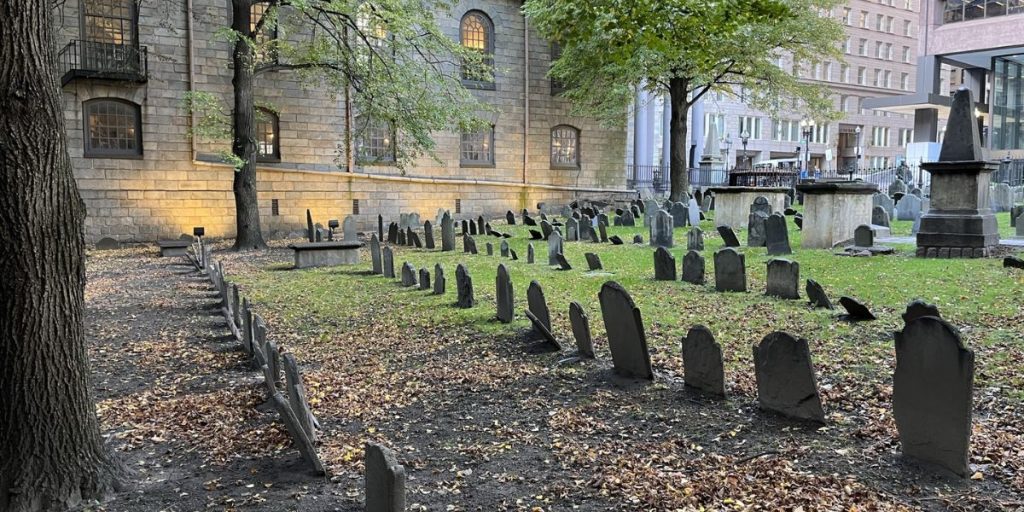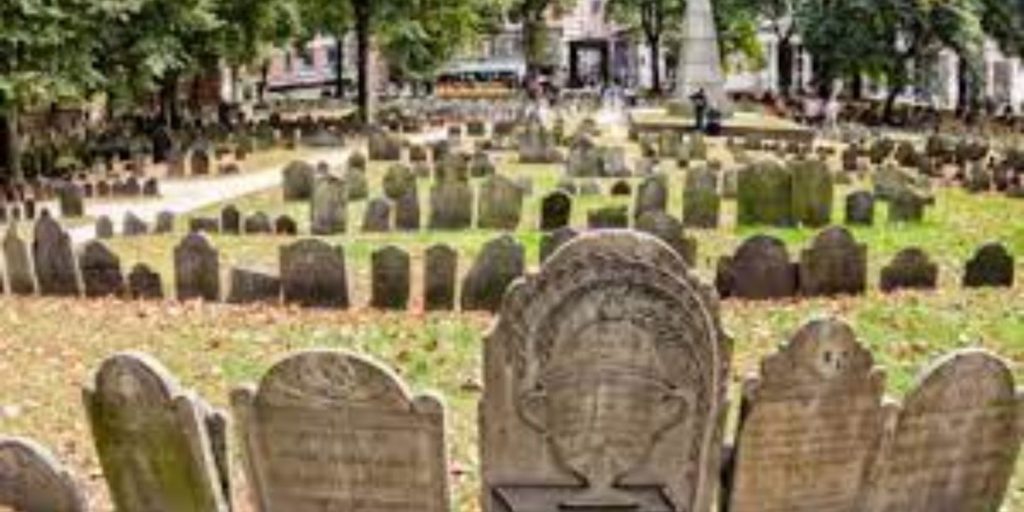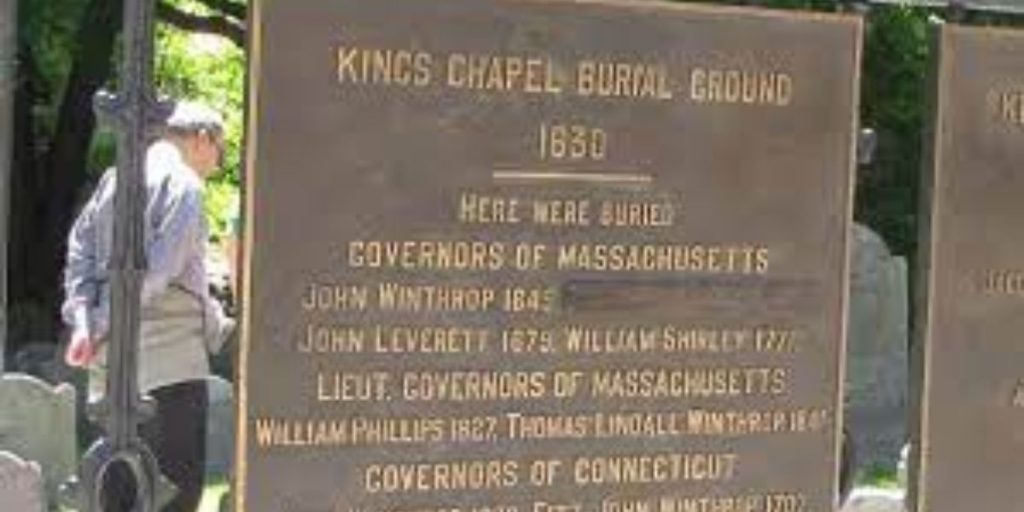Nestled in the heart of historic Boston, King’s Chapel Burying Ground stands as a serene testament to the city’s rich past. Established in 1630, this ancient cemetery holds a unique place in American history, providing a final resting place for some of the nation’s earliest settlers and prominent figures.
Let’s embark on a journey through time as we explore the fascinating history and significance of King’s Chapel Burying Ground.
A Historical Overview
King’s Chapel Burying Ground predates many other burial grounds in Boston, making it one of the oldest cemeteries in the city. It was founded in 1630, the same year as the city itself, and initially served as a burial site for members of the First Church in Boston.

Over the years, the cemetery expanded and became the final resting place for a diverse array of individuals, reflecting the evolving demographics and history of Boston.
Notable Interments
One of the most captivating aspects of King’s Chapel Burying Ground is the array of notable individuals interred within its hallowed grounds. Among them lies John Winthrop, the first governor of the Massachusetts Bay Colony, whose leadership played a pivotal role in shaping the early history of the region.
The gravestones also mark the final resting places of Mary Chilton, the first woman to step off the Mayflower, and Joseph Tapping, a colonial printer.
The Granary Burying Ground, adjacent to King’s Chapel Burying Ground, is also notable for housing the remains of prominent figures such as Paul Revere, John Hancock, and Samuel Adams. Together, these historic cemeteries create a poignant narrative of Boston’s role in the birth of the United States.
Also, read: Learn About the Biggest Flood that Ever Hit Mississippi
Architecture and Design

The cemetery’s layout and design reflect the prevailing styles of the time it was established. Gravestones from the 17th and 18th centuries feature intricate carvings, including skull and crossbones motifs, cherubs, and other symbols that provide insight into the prevailing beliefs and customs of the era. The carefully arranged rows of weathered tombstones evoke a sense of quiet dignity and historical reverence.
Read More: Exploring the Oldest Church in the Mississippi State
Preservation Efforts
As an essential part of Boston’s historical fabric, King’s Chapel Burying Ground has undergone various preservation efforts to ensure its longevity. The city, in collaboration with historical preservation organizations, has worked to restore and maintain the site, preserving its historical integrity for future generations.

Visiting King’s Chapel Burying Ground
Today, King’s Chapel Burying Ground is open to the public, allowing visitors to explore its historic grounds and gain a deeper understanding of Boston’s early days. The cemetery’s location, adjacent to the iconic King’s Chapel, makes it a convenient and worthwhile stop for those interested in the city’s rich history.
You May Also Like: Sneak Peek Into Mississippi City with Highest Human Trafficking Rate in the US
Conclusion
King’s Chapel Burying Ground stands as a timeless testament to Boston’s enduring history. As visitors wander through its ancient paths and reflect on the lives memorialized within its confines, they gain a profound appreciation for the pioneers, leaders, and everyday individuals who played a role in shaping the city and the nation. In the quietude of this historic burial ground, the past comes alive, inviting all to connect with the roots of America’s story.